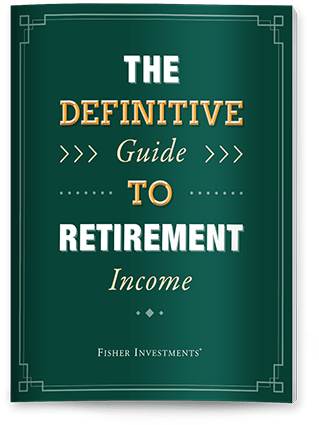Personal Wealth Management / Market Analysis
Q2 US GDP Was Iffy. Markets Already Knew.
Stocks already lived through—and priced—Q2.
Strong. Weird. Moderate. These are just some of the words we saw headlines use to describe Q2’s US GDP report, which boasted a 3.0% annualized growth rate.[i] May we offer an alternative? Iffy. Maybe borderline bad. Not a negative surprise for forward-looking stocks, mind you, but evidence of tariffs’ economic ills. We think stocks are correct to continue looking 3 – 30 months out, to a time when tariff uncertainty is lower and businesses are moving forward. In other words, we remain bullish. But a clear-eyed economic view is necessary to judging whether sentiment gets out of whack from here.
Q2’s report is a bizarro-world version of Q1’s. Then, GDP fell -0.5% annualized, but private demand components were strong.[ii] The negativity came from surging imports, which rose 37.9% annualized as Americans scrambled to beat potential tariffs.[iii] GDP math employs net exports (subtracting imports from exports to try to isolate single-country output), so this offset rising consumer spending and business investment. Q2 brought the opposite. Imports plunged -30.3%, probably a mix of pulled-forward demand creating a pothole and tariffs’ generally discouraging trade.[iv] Exports also fell, down -1.8% annualized, as the rest of the world worked through the stockpile of US goods it raced to buy in Q1.[v]
We told you to expect this in our coverage of Q1. That wasn’t hard to foresee. But beyond trade, things seem less than rosy. Consumer spending accelerated to 1.4% annualized, which prompted some cheer since this is the largest economic segment.[vi] Problem is, consumer spending isn’t a swing factor. Most of it goes to services and tends to be pretty stable. Business investment is more of a swing factor, and it slowed considerably, from 10.3% annualized in Q1 to 1.9%.[vii] Most of that growth came from equipment, which smells a bit like businesses racing to buy machinery from Japan and Taiwan before the reciprocal tariff pause expired—something trade data from the US, Japan and Taiwan all hint at. Meanwhile, investment in structures fell -10.3% annualized, extending Q1’s decline.[viii] And research & development notched its third straight decline, falling -1.6% annualized.[ix] Both imply businesses are becoming more risk-averse as tariff uncertainty clouds the landscape.
If we get a tariff-induced recession, we think this is where it would come from: businesses’ putting longer-term plans on ice as they wait for clarity. Uncertainty reigned throughout Q2, which included almost the entire 90-day reciprocal tariff pause window. Now we are staring down a fresh deadline, August 1, without much more clarity. Yes, the US has a few “deals,” but the big ones are scant deals to make a deal, with disagreements already bubbling with Japan and the EU. Meanwhile, there is a lot of can-kicking with China, and the appeals court case that starts tomorrow is another wild card. If you are running a business, do you deploy a long-term investment now, knowing you may need to rejigger your entire supply chain depending on how things go over the next several months? Or do you wait?
There is mounting evidence many businesses are waiting. Core capital goods orders, which are a leading indicator of equipment investment, fell in three of the last five months. One litmus test will be what inventories do in Q3. Businesses ran them down in Q2, detracting -3.2 percentage points from headline GDP’s growth rate, after stockpiling in Q1.[x] Will they replenish in Q3? Or will the longer-running drawdown that started at 2023’s end continue?
These are the things we will be watching, along with sentiment’s evolution. For now, sentiment seems mostly in check. There is plenty of chatter about tariffs’ being a political and diplomatic win, but when the discussion turns to the economy, moods and views are much more measured. There is a sprinkling of optimism, but also a lot of the worst isn’t here yet. This extends the bull market’s wall of worry, which keeps iffy reports like Q2’s from being a negative shock. Bull markets are very good at rising through economic rough patches when expectations aren’t outlandish. It is all about the gap between reality and expectations, and that gap remains decently wide.
So we are bullish, even as we look what we think is an iffy-to-bad report in the eye. When stocks priced worst-case-scenario tariff expectations in April, recession fear was a big part of it. And as businesses gain clarity, they should become less risk averse. But it is entirely possible we see some more iffy (or weaker) reports before we get there.
If you would like to contact the editors responsible for this article, please message MarketMinder directly.
*The content contained in this article represents only the opinions and viewpoints of the Fisher Investments editorial staff.
Get a weekly roundup of our market insights
Sign up for our weekly e-mail newsletter.

See Our Investment Guides
The world of investing can seem like a giant maze. Fisher Investments has developed several informational and educational guides tackling a variety of investing topics.





